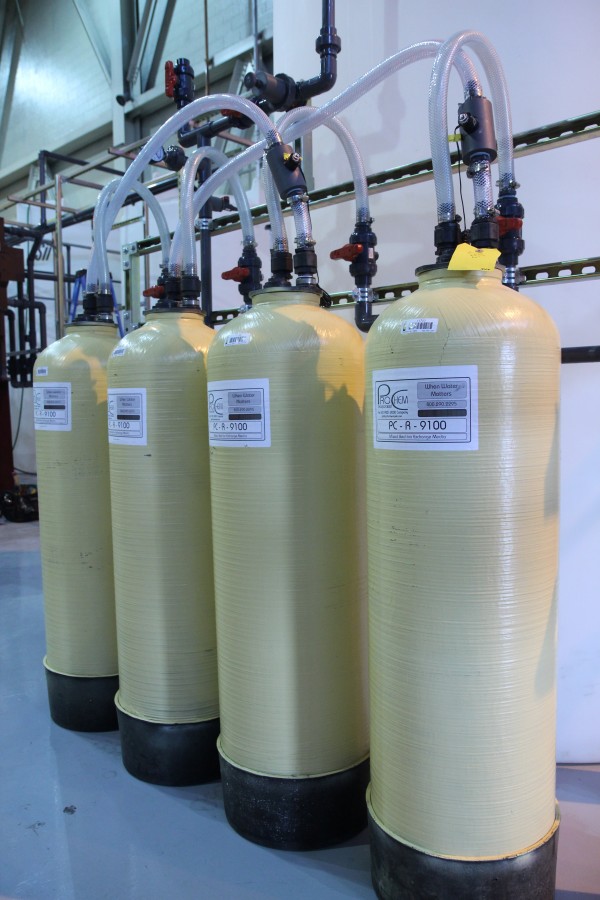What are Ion-Exchange resins?
Ion-exchange resins are small, porous beads that are negatively or positively charged, allowing them to grab onto ions (contaminants in the water) that are attracted to that charge. These resins are solvents (insoluble in water), and they range in diameter from 0.3 to 1.5 mm. Resin is placed in a vessel, usually called a column, and submerged in water where it forms a layer on the bottom called a bed. The bed absorbs water and swells when it is first immersed. Immersion conditions the resin. When the resin is fully conditioned, the beads contain 50 - 70% water.
Wastewater is passed through the resin columns while the resin bed is gently agitated. The agitation allows the water to flow uniformly around the resin beads. The agitation actually increases the amount of surface area that comes in contact with a wastewater, which increases the likelihood that the porous openings will come into contact with ions. Imagine the resin bead as a ball covered in holes. As the ball rolls and bounces in the wastewater, its holes become exposed to the particles suspended in the water. Due to the charge, if the ions come into contact with the resin, they will be attracted to it and become trapped in the pores.
There are two main types of resins: Cationic and Anionic. Cationic (pronounced like "kat-eye-on") resins are negatively charged and remove positively charged cations. Here are some examples of ions that can be removed by Cationic resins: Chrome (Cr), Nickel (Ni), Zinc (Zn), Copper (Cu), Lead (Pb), Calcium (Ca), and Ammonia (NH3).
Anionic resins are positively charged and remove negatively charged anions. Here are some examples of ions that can be removed by Anionic resins: Chlorides (Cl), Sulfates (SO4), Nitrates (NO3), Carbonates (CO3), Phosphate (PO3), Bromide (Br), and Hydroxide (OH).
Why use Ion-Exchange resins for wastewater treatment?
Ion-exchange resins fill a unique niche when it comes to wastewater treatment. They are ideal for treating waste streams that are lower in total suspended solids (TSS) and in contaminant levels than those treated with a chemical program. Other advantages include:
- No sludge generated. If the wastewater being treated is from an electroplating operation, for example, sludge is considered F006 hazardous and can be very expensive to haul off.
- Less labor intensive than chemical treatment.
- Columns ship easily and are usually considered non-hazardous.
- Much smaller space requirements than a chemical treatment system. A system that treats 10 gpm - 20 gpm can easily fit in approximately a 4 x 10 footprint.
- Lower overall operation cost.
There are several suppliers that offer ion-exchange resins and the columns. The simplest way to use ion-exchange is by utilizing a column exchange program, which is available through certain vendors. These programs allow you to exchange your exhausted columns for regenerated ones without impeding your wastewater treatment process or production. Contact an industrial water treatment company who can help you select the most effective resin, install the system, and set up a routine column exchange program that works for your facility.
ProChem strives to help their customers establish the highest level of credibility and a positive reputation within the regulatory community. Their goal is to significantly reduce the amount of fresh water that manufacturers require by providing sustainable solutions that will also benefit the customer’s bottom line.

